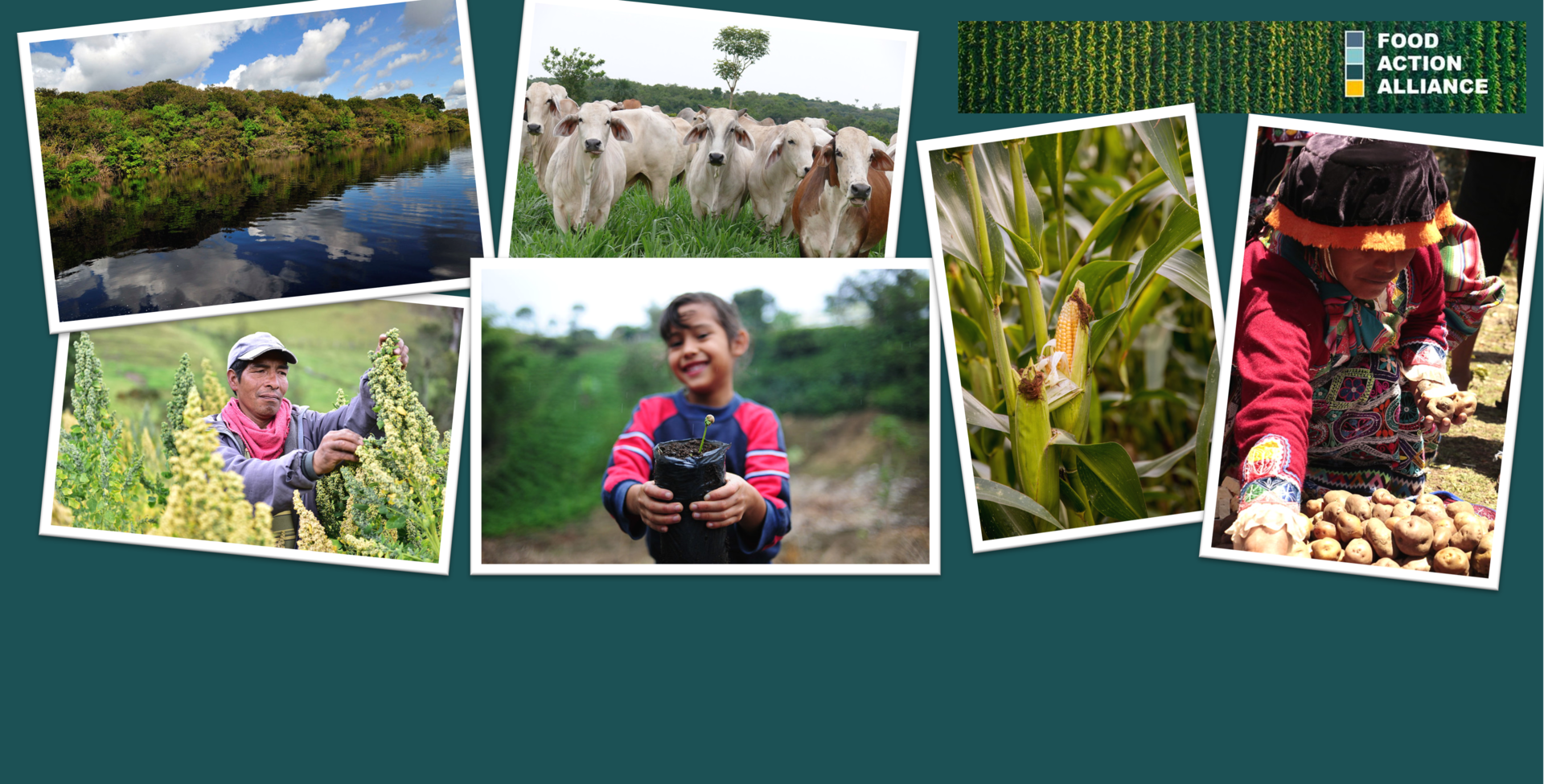The Food Action Alliance Latin America Portfolio of Flagship Food System Projects

The Food Action Alliance (FAA), a global food systems initiative facilitated by the Alliance of Bioversity International and CIAT in Latin America, promotes market-driven sustainable food systems transformation.
By: Dylan Anderson-Berens and Mark Lundy
In our first blog in this series of four, we presented the Food Action Alliance (FAA) and its seven current flagship projects that respond to Latin America’s food system imperatives. As we learned in the second blog, flagships are designed and selected to drive impact in two or more of the four food systems-level impact areas, while the portfolio as a whole aims at significant impact in all four impact areas which span the food system’s major functions. These include:
- Economic and social inclusivity: Ensuring economic and social inclusion for all food system actors, especially smallholders, women, and youth.
- Sustainable: Minimizing negative environmental impacts, conserving scarce natural resources, and strengthening resiliency against future shocks.
- Efficient: Ensuring that sufficient food is produced and available for the world’s population.
- Nutritious and healthy: Promoting consumption of a diverse range of healthy, nutritious, and safe foods.
Impact Area: Nutritious and healthy – While stunting and wasting overall are on the decline in the region, this masks dramatic inequities along dimensions of income and ethnicity. Nearly 60% (302 million) of the region’s adult population (54% men and 70% of women) are overweight, and nearly 20% (100.8 million) are obese (14.6% in men and 24% in women). In LAC, around 4 million children - just over 7 percent - under the age of 5 are overweight. Multiple burdens of stunting, wasting, overweight and obesity and nutrient deficiencies are seen, sometimes in the same household or individual. FAA initiatives address this issue both at the farm / rural community scale as well as with a broader focus on consumers.
Impact Area: Efficient – LAC agriculture uses over one-third of the region’s land area, consumes nearly three-quarters of the region’s freshwater resources, and generates almost one-half of the region’s greenhouse gas emissions. Yet, highlighting an important trade-off, LAC food exports help to lower and stabilize international food prices, bringing benefits to consumers across the globe who could number 10 billion by 2050. Thus, can LAC continue to play this role but avoid additional carbon emissions, resource depletion, and biodiversity loss? Multiple FAA initiatives aim to feed the future with sustainable intensification.
Impact Area: Economic and social inclusivity – By some accounts, Latin America is the most unequal region in the world – in 2014 the richest 10% of people in Latin America had amassed 71% of the region’s wealth. One percent of “super farms” in Latin America now control more productive land than the other 99 percent. Women hold less land than men; from as little as 8% in Guatemala, and up to 30% in Peru. Major socioeconomic instability has hit Venezuela, Haiti and Central America and while the FAA is not built for crisis response, its multi-stakeholder flagships are crowding in marginalized groups in their sustainable food systems transformation in multiple ways as highlighted in the following graphic.
The FAA Latin America portfolio of flagships are systemic in nature, scalable partner-led, market-based food system initiatives supported by FAA’s network of collaborating partners and experts. They are transformative, investible initiatives focused on improving food system impact areas using various levers such as finance, innovation and partnerships.

The FAA Latin America pipeline includes flagship proposals under development as part of the flagship review process.

For information on flagship submissions or joining the FAA, please contact Dylan Anderson-Berens or Mark Lundy. In the final blog in this series, we will examine how the FAA in Latin America relates to the United Nations Food Systems Summit (UNFSS) and serves as a framework, linked with solution clusters, supporting national pathways and agendas for market-driven food systems transformation.
Read the other stories in this series:
- The Alliance is transforming food markets in Latin America
- How the Food Action Alliance designs and selects Flagships that take a food systems approach
- How does the Food Action Alliance (FAA), a global food systems initiative facilitated in Latin America by the Alliance of Bioversity International and CIAT, relate to United Nations Food Systems Summit (UNFSS)
